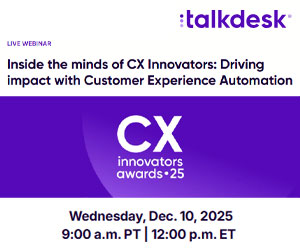Ian Moyse of Natterbox references the Salesforce platform while asking: is it time that telephony comes into the customer experience age?
Salesforce is an extensive platform, one where you can select from many thousands of apps available to extend and customise Force.com, Sales Cloud and/or Service Cloud to your own business requirements.
The Salesforce-held data becomes a point of record on customers and prospects, a core central repository of great knowledge. Therefore, extending from this makes sense, particularly in areas that can take value from this real-time information to enhance other areas of your business.
As a Salesforce admin this gives you the ability to deliver greater value to your company and to increase your and your team’s value to the business. And a Salesforce admin can now be empowered to both support and enhance the business’s telephony.
Telephony has always been a dark art, thrust into the hands of the IT Department, who typically do not have the technical background or skills in telephony and PBX systems. They usually have inherited it due to it having no better fit elsewhere in the business.
The telco world and its components are very different from the IP-based world that traditional IT is used to operating within.
Often these historical telephony deployments are also creaking, having through accident and sometimes design, over time been configured in weird and wonderful ways that now no one is familiar with or has the time to unpick. So, IT are keen to have someone else own the problem, but find there is nowhere else to locate it in the business!
Therefore IT often work with a local telecoms reseller, someone who can get to site if/when needed to physically configure and get to the PBX or deskphones.
Someone new joins and you provision their applications and then have to physically set up a deskphone and the PBX for their number, and hunt groups etc. Worse, you open a remote office or have a home worker and want to divert calls based on certain conditions to their home line, their PC or their mobile or all of the above.
Setting up another office location local or foreign opens up an interesting IT jobs list. Put a local PBX in for the workers there, bridge phones so you can cross-office dial and transfer calls, all the things the user and customer ends of the call would take for granted. This is where a simple thing takes effort and cost, and this is to achieve something basic after all!
So for the business it’s not an ideal situation – the technology is not empowering, disrupting or enabling, simply residing. What about the customer? The world has changed and continues to do so at a rapid pace, with internal user and external customer expectations of experience at a height never seen before due to the influence of the likes of Amazon. So why oh why do we put up with the poor telephony experiences we are dealt?
We put up with impersonal, unfriendly, treated like a number experiences! On the web we quickly saw sites go from basic, flat uninteresting and unengaging to rich, engaging, personalised, smart experiences. Sites where they recognise you have come back, what you did before, who you are, your profiles, what you likely need now and present as personal and shortened an experience as possible.
People analyse drop-offs from site pages, how long people stayed, are the five clicks to get to page Y too many, what impact does the web journey have on the customer, and they do something about it!
Websites are bidirectionally linked to CRM systems, data captured updates the CRM, customers can update their CRM information via the web page, and CRM data about the customer can be used to personalise the web experience.
Yet, the telephone has been forgotten. We are presented with generic routing, so whether we are calling for the first time or the best customer, we are treated the same. Nothing known about us is used to customise our experience or our journey or to speed us on our way.
Now that is without you even being in a dissatisfied position! Now exacerbate that and it quickly gets worse.
Call through and log a complaint, having gone through all the rigmarole of the voice menus (IVR – Interactive Voice Response), gotten through and identified yourself, been transferred to the right person, logged a complaint and been told you would get a callback. But the call hasn’t come!
You call back in and go through all of the above again, get to an agent, likely having queued at the back again and perhaps ask for a manager to escalate. Having done so, how many more times you will need to go through this loop is hitting your mind. And as you do, you start to get familiar with the IVR menus, knowing what to press at each stage from memory, a state you should ideally never get to.
Been here before? Been at a stage of calling a firm knowing the menu and time you need to go through just to get to speak to someone, expecting to hear a pre-programmed they are busy message (because they don’t really want to speak to you, wanting you to self serve, hence cutting back too far on their agent coverage!).
This is where you as the customer start to get frustrated or even angry, you tell others and perhaps even threaten or actually move your business.
So isn’t it time that telephony comes into the customer experience age?
We have seen other areas of technology rapidly disrupted by new form factors such as cloud, the Internet of Things and smart devices, and the way we serve has been turned on its head.
Should telephony be that hard for the business and the customer? Why not take the same approach and expectations driven by the web experience and apply them to your telephony?
Provide a system that empowers customers to have personalised experiences, based on who they are to you, what you know about them and the current situation. One that shortens the customer journey and provides your staff with the information to help the customer more quickly and engage them more effectively.
If you have invested in Salesforce, and in driving data capture about customers and prospects, why not increase its value to you and leverage this into your phone journeys?
Imagine being able to inform a sales user that should a key customer be marked as “Gold” category, their calls will automatically be put to the head of inbound call queues. That any new sales opportunity in the CRM over a target threshold value will automatically get priority support during their trial experience and bypass automated call recording triage processes.
Then, if you put an account in your team’s name that any of their inbound calls will automatically go to the sales rep allocated and then the call group for your team only. All of this simply by changing CRM data, not having to go and reconfigure the phone system!
By removing the complexity from telephony and utilising an embedded Salesforce telephony system, the alignment of the phone system with the business is put onto a business-needs level and removed from being technology led.
The Salesforce Admin who would work to align the customer processes to Salesforce can now align them to the phone interactions required, be they inbound, outbound or both.
Being able to drive a telephony behaviour based on any live Salesforce data, to capture data quickly and easily from a phone call into Salesforce and to report and analyse combined Salesforce and telephony data all in one place allows the immersive blending of the phone system into the remit of the Salesforce team.
Thus, in this way telephony decisions become customer led and focused and not technical blocks to the business and customer. Changes can happen quicker and be far more customer aligned and flexible.
The value from a business’s Salesforce investment is increased, the data in Salesforce becomes more important and the Salesforce Admin and team in the business deliver increased richness and range to users and customer outcomes.
Author: Robyn Coppell
Published On: 1st Jun 2018 - Last modified: 5th Mar 2020
Read more about - Archived Content, Natterbox





























